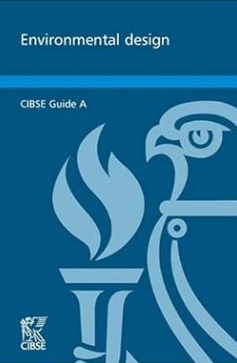Guide A: Environmental design provides guidance on design criteria and calculation methods such as fabric performance, heating and ventilation system sizing, methods for thermal comfort evaluation and energy demand.
 CIBSE Guide A: Environmental design is the premier reference source for designers of low energy sustainable buildings. It is perceived as a guide to good current practice and CIBSE members are encouraged to follow the guidance in discharging their design duties.
CIBSE Guide A: Environmental design is the premier reference source for designers of low energy sustainable buildings. It is perceived as a guide to good current practice and CIBSE members are encouraged to follow the guidance in discharging their design duties.
The purpose of this CIBSE Guide is to assist building services engineers to set criteria for and develop a design, in collaboration with other design disciplines, that meets the client brief, complies with the various statutory requirements, and is sustainable in the face of a changing climate (which would be significantly different from today’s climate), within the lifetime of the buildings.
CIBSE Guide A defines the main criteria for the design in terms of comfort and health, and provides a consistent set of data for internal and external design conditions and the appropriate methods of calculation. The Guide also covers the issue of energy demand and carbon emissions, which inevitably are affected by achieving comfort and health criteria. It provides guidance on quality of design by introducing logical processes through which engineers carry out such calculations and make decisions, in a consistent, repeatable and auditable manner.
Using this Guide, designers will be able to work with and advise their clients, and other members of the design team, on the most appropriate type of building components, namely fabric and façade, and the environmental conditioning systems, i.e. heating, ventilation, and air conditioning (hvac), lighting, and low- and zero-carbon generation technologies, including renewable sources of energy
